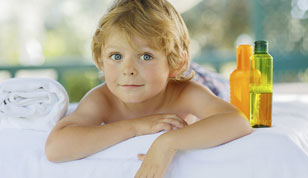Blog Categories
Search Blog
Blog Categories
Pediatric Massage as a Safe and Nurturing Intervention for Autism
It is estimated that 1 in 110 children in the US are considered to have an Autism Spectrum Disorder (ASD) which includes autism, Asperger’s syndrome, and pervasive developmental disorder – not otherwise specified (PDD-NOS). The Diagnostic and Statistical Manual of Mental Disorders 5 (DSM-5) describes the criterion for ASD to include: differences in thinking, communication, social relatedness, sensory processing, symbolic play, and restricted, repetitive patterns of behavior and interests. Therapists and researchers have also noted that confusion and anxiety often affect children and their parents.
Children with ASD may also have co-morbid diagnoses; these can include attention deficit hyperactivity disorder (ADHD), learning disabilities, anxiety, seizure disorders, and speech differences. These certainly have an impact on, and complicate, diagnosis and treatment.
Infant and pediatric massage offers a multi-sensory approach, through skin to skin, eye to eye contact, exchange of smell and communication. It provides the opportunity to help parents explore what works best for their child and best enhances their relationship with their child with ASD.
Families and healthcare professionals often report that children with ASD might show lack of eye contact, as well as, have an aversion to touch and tactile stimulation. As a result, there is often susceptibility to sensory overload. That is why with massage it is important to begin with proper intention and gradually provide deeper tactile stimulation, while being very aware of non-verbal communication. Therapists and parents focus on taking time to listen to and read the child’s communication cues. They can then modify the experience based on how the child responds to their touch.
5 Ways that Therapeutic Massage Can Benefit a Child with ASD:
- Massage provides the opportunity for eye to eye contact, skin to skin contact, exchange of smell, communication, turn taking, and relaxation. These all promote bonding and attachment and are critical for the child on the spectrum.
- Children who receive 15 minutes of massage before bed nightly exhibit less stereotypical behaviours and show more on-task and social relatedness behavior during play at school.
- Pediatric massage might provide relaxation and stress reduction for both parent and child and can calm muscle spasms.
- Over the course of time while receiving regular massage, the child typically becomes more accustomed to tactile stimulation and the practice begins to help reduce inattentiveness, touch aversion and withdrawal.
- It is estimated between 56 and 83 percent of children with ASD experience sleep disturbances. Often, by incorporating massage therapy into daily routines, children with autism experience decreased issues with sleeping.
Through the use of massage therapy, our basic human need for safe, nurturing contact is met with often wonderful results. For children with ASD, it provides not only a positive experience of being touched, but the effects hold lifelong benefits for the child and their entire family.
References
Cullen-Powell, L.A., Barlow, J.H., & Cushway, D. (2005). Exploring a massage intervention for parents and their children with autism: the implications for bonding and attachment. J Child Health Care. 9(4): 245-55.
Escalona, A., Field, T., Singer-Strunck, R., Cullen, C., & Hartshorn, K. (2001). Brief report: improvements in the behavior of children with autism following massage therapy. J Autism Dev Disord. 31(5): 513-6.
Field, T. (1994). Infant massage. The Journal of Perinatal Education, 3, 7-14.
If you have any questions regarding massage therapy as a possible intervention for your child please contact our registered massage therapist, Heather Alexander-Clark at heather.alexander-clark@boomeranghealth.com.






